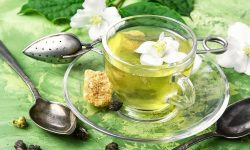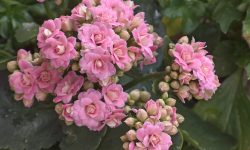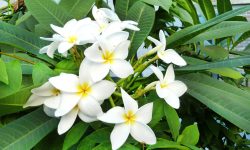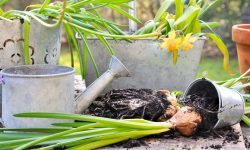Yarrow is one of the most versatile perennials, admired for its clusters of tiny, long-lasting blooms and feathery foliage. Known scientifically as Achillea millefolium, this plant has been cherished in gardens for centuries, not only for its beauty but also for its resilience and usefulness. Gardeners love yarrow for its ability to attract pollinators, thrive in difficult conditions, and provide continuous color throughout the warm months.
One of the most frequently asked questions about this perennial is: when does yarrow bloom? The answer depends on a combination of climate, care, and variety. Understanding its blooming habits allows gardeners to plan better, ensuring steady waves of flowers that enhance landscapes and support pollinators. In this detailed guide, we will explore everything about yarrow’s blooming period, from regional differences to techniques for extending its flowering season. You will also learn how to troubleshoot common issues and discover practical tips that guarantee a thriving display year after year.
Understanding the Blooming Season of Yarrow
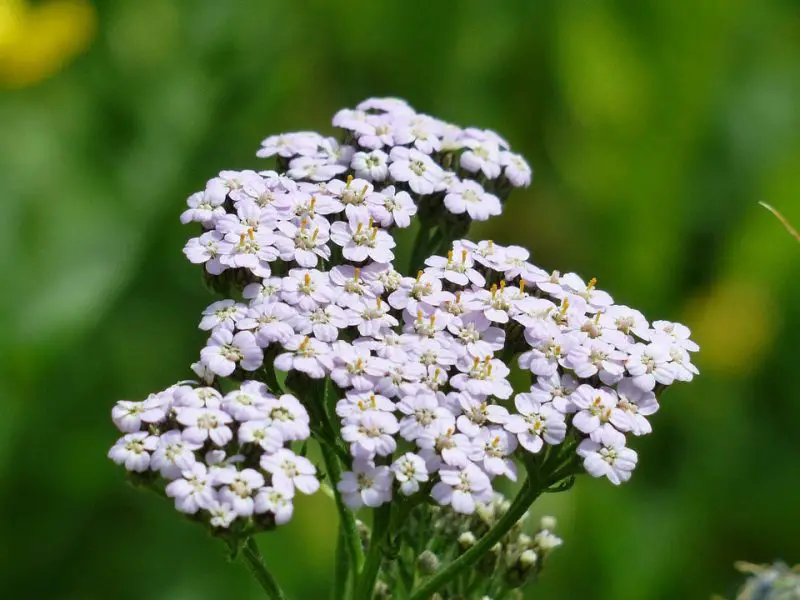
Yarrow is admired for its long and reliable blooming season, which can last several months when the plant is well cared for. Typically, yarrow begins to flower in late spring and reaches its peak during the early to mid-summer months. Depending on the variety and local climate, blooms may continue into early fall, offering gardeners extended color when many other perennials are fading. The exact timing often depends on how quickly the soil warms in spring and the amount of sunlight the plant receives.
The plant produces flat-topped flower clusters that can range in color from classic white to vibrant yellows, oranges, reds, and pinks. These blooms not only add ornamental appeal but also provide nectar for pollinators such as bees and butterflies. The initial flush of flowers is usually the most abundant, yet with proper maintenance, yarrow can produce repeat blooms. Deadheading plays a vital role in encouraging secondary flowering by preventing energy from being spent on seed production. This process helps extend the season and ensures consistent color throughout summer.
Another factor influencing the length of yarrow’s bloom season is its placement in the garden. Plants that receive full sun, good drainage, and occasional watering during drought conditions tend to flower longer and with greater intensity. In contrast, those grown in partial shade or poor soil may struggle to maintain vibrant displays. By combining the right growing conditions with timely maintenance practices, gardeners can maximize the blooming period, enjoying waves of flowers that enhance the landscape for months. Yarrow’s ability to adapt to different climates while still providing extended flowering makes it one of the most rewarding perennials to grow.
Factors That Influence Yarrow Blooming
Climate and Temperature
Climate is one of the strongest factors influencing when and how yarrow blooms. In regions with warm springs and mild winters, plants often begin to flower earlier, sometimes as soon as late April. In contrast, gardeners in colder areas may not see the first flower clusters until June, as the plant requires sustained warmth to trigger its blooming phase. Sudden cold snaps or late frosts can delay the process, while prolonged heat without adequate moisture may shorten the blooming period significantly.
Stable temperatures and gradual seasonal transitions allow yarrow to maintain consistent flowering. Ideally, night temperatures above 10°C (50°F) support the best bud formation. In colder climates, gardeners can help by planting yarrow in sheltered areas, near walls, or in raised beds where soil warms more quickly. Meanwhile, in hot regions, providing mulch and occasional deep watering reduces stress and allows flowers to persist longer. Understanding these temperature dynamics helps maximize yarrow’s bloom window regardless of location.
Soil Quality and Drainage
Yarrow is naturally tolerant of poor soil, but bloom production improves when conditions are balanced. Overly fertile soil encourages leafy growth at the expense of flowers, while extremely poor soil weakens plants and shortens the flowering season. The ideal setting is well-drained, moderately fertile soil that provides stability without overwhelming nutrients. This balance supports strong roots and steady blooms throughout summer. Adding a small amount of compost in spring enhances structure without pushing excessive growth, keeping the plant focused on flower production.
Drainage is equally important. Yarrow dislikes soggy conditions, which can lead to root rot and fungal problems that interfere with blooming. Sandy or loamy soils allow excess water to pass through, giving roots room to breathe and preventing disease. Gardeners with heavy clay soil can improve conditions by amending with compost, grit, or coarse sand to create better airflow around the roots. Raised beds are another practical solution in wet areas. By combining moderate fertility with proper drainage, gardeners create the foundation for vigorous, long-lasting flowers and ensure that yarrow remains resilient and colorful throughout its extended blooming season.
Sunlight Exposure
Light levels directly determine how abundant yarrow’s flowers will be. While the plant can tolerate partial shade, it achieves its best performance when exposed to at least six hours of direct sun each day. Full sunlight encourages stronger stems, brighter colors, and a longer bloom window. Without adequate light, yarrow often becomes leggy, produces fewer flowers, and becomes more susceptible to disease. Limited light also reduces its ability to recover after blooming, which can shorten the overall flowering period.
Choosing a sunny site not only enhances bloom quality but also reduces the need for corrective care later in the season. In shaded conditions, gardeners may need to stake stems or deal with poor air circulation that fosters mildew. Positioning yarrow in a south-facing or unobstructed garden bed maximizes light exposure and ensures sturdier growth. In regions with intense summer heat, morning sun with light afternoon shade can prevent stress while still supporting full bloom. By prioritizing sunlight, gardeners help yarrow reach its full ornamental potential, delivering waves of vibrant flowers that last for months and attract pollinators throughout the season.
Regional Blooming Differences
Yarrow in Cold Climates
In colder climates, yarrow typically begins blooming later than in warmer regions, often starting in June and continuing through August. The shorter growing season means the plant has less time to produce flowers, but the cooler temperatures help preserve bloom color and quality. Gardeners in these areas sometimes notice more vibrant shades and sturdier stems because the plants are not exposed to extreme heat stress. However, late frosts can delay flowering, and sudden weather shifts may shorten the bloom period.
To maximize the season, gardeners in cold regions can start yarrow indoors in early spring and transplant it once the danger of frost passes. Planting in sheltered spots with good sun exposure also encourages earlier flowering. Regular deadheading and occasional light watering during dry spells help extend the bloom window. By providing consistent care, gardeners can often achieve a second flush of flowers before autumn, ensuring yarrow remains a highlight even in regions with shorter summers.
Yarrow in Warm Climates
In warmer climates, yarrow often begins to bloom earlier, sometimes as soon as late April, and can continue flowering into October. The extended growing season provides gardeners with months of continuous color, making yarrow especially valuable in landscapes that need long-term brightness. However, prolonged heat and intense sunlight can cause flowers to fade quickly if the plants are not maintained properly. Without adequate care, blooms may appear shorter-lived and less vibrant compared to cooler regions.
Gardeners in hot areas should provide deep, infrequent watering to prevent stress during long dry periods. Mulching around the base of the plant helps retain soil moisture and protects roots from extreme temperatures. Deadheading is especially important in warm regions, as it stimulates repeat blooms throughout the season. Dividing plants every few years prevents overcrowding and ensures continued vigor. With these techniques, yarrow can maintain strong, colorful blooms across an impressively long flowering window.
Yarrow in Mild and Coastal Regions
In mild or coastal climates, yarrow benefits from moderate conditions that support steady blooming from late spring through early fall. The absence of extreme heat or severe frost allows the plant to thrive with fewer interruptions, producing flowers that last for months. Coastal breezes and consistent humidity often help prevent heat stress, while mild winters encourage early growth. In some areas, yarrow may even remain semi-evergreen, providing foliage interest outside the bloom season.
To make the most of these favorable conditions, gardeners should still focus on proper soil drainage and sufficient sunlight. While yarrow tolerates the humidity of coastal areas, overly damp soils can lead to fungal issues. Regular trimming after the first flush of blooms encourages fresh growth and prolongs the flowering period. By taking advantage of their climate’s natural balance, gardeners in mild regions can enjoy long-lasting displays of yarrow that outperform those in harsher environments.
Popular Yarrow Varieties and Their Bloom Times
Achillea millefolium (Common Yarrow)
Achillea millefolium, also known as common yarrow, is the most widely grown variety and naturally found in many regions. Its bloom time typically stretches from early summer through late summer, often starting in June and continuing into August depending on the climate. The flowers are usually white but can also appear in pale shades of pink, creating a delicate and classic look in the garden. Because of its adaptability, it is often the variety chosen for wildflower meadows and naturalized areas.
This variety thrives in both poor soils and dry conditions, making it a dependable choice for low-maintenance gardeners. Regular deadheading helps prolong its blooming window, allowing multiple flushes of flowers throughout the season. Its feathery foliage adds texture even when not in bloom, ensuring year-round visual interest. With minimal care, Achillea millefolium can bring consistent, long-lasting beauty to gardens in a range of climates.
Achillea filipendulina (Fernleaf Yarrow)
Achillea filipendulina, commonly called fernleaf yarrow, is admired for its tall growth habit and bright golden-yellow flower clusters. This variety typically blooms from mid-summer into early fall, often starting in July and lasting until September. Its sturdy stems make it an excellent choice for cut flowers and dried arrangements, as the blooms retain their color for a long time. The bold flower heads stand out in sunny borders and pair beautifully with other summer perennials.
Fernleaf yarrow thrives in hot, sunny conditions and is highly drought-tolerant once established. It benefits from occasional deadheading, though many gardeners allow it to go to seed for natural reseeding. Its extended bloom period, especially in warm climates, makes it one of the longest-lasting yarrow varieties. With its vibrant color and durability, this variety remains a favorite for both ornamental and practical garden uses.
Achillea ‘Moonshine’
Achillea ‘Moonshine’ is a popular hybrid known for its soft, lemon-yellow blooms and silvery-gray foliage that provides contrast in garden beds. It begins blooming in late spring and often continues until mid-summer, generally from May to July, with the possibility of reblooming if cut back after the first flush. Its compact size makes it suitable for smaller gardens and container plantings, where it provides a long season of cheerful color.
This variety thrives in well-drained soil and full sun, showing resilience in both hot and dry conditions. Regular trimming after flowering not only keeps the plant tidy but also encourages fresh blooms later in the season. Its extended bloom period combined with attractive foliage ensures year-round appeal. Gardeners who want a reliable, long-blooming yarrow that suits various landscapes often choose ‘Moonshine’ as a centerpiece.
Achillea ‘Paprika’
Achillea ‘Paprika’ is a striking variety that features vibrant red flowers fading to pink and soft yellow as they age, creating a multi-tonal effect. Its bloom season usually begins in early summer, around June, and continues into late August with proper care. This long bloom window makes it ideal for gardeners seeking continuous color and variety throughout the hottest months of the year. Its bold shades add warmth and contrast when paired with other summer-blooming perennials.
This variety responds well to deadheading, which significantly extends its flowering season. It also adapts easily to different soils as long as drainage is adequate, and it requires little maintenance once established. The changing flower colors add visual depth to borders and attract pollinators throughout the blooming months. With its vivid display and long-lasting performance, ‘Paprika’ remains one of the most eye-catching yarrow cultivars available.
How to Extend the Yarrow Blooming Season
Deadheading for Continuous Blooms
One of the simplest and most effective ways to extend the yarrow blooming season is through deadheading. Removing spent flower heads prevents the plant from focusing energy on seed production and redirects it toward forming new buds. This process encourages repeat blooming, often leading to a second or even third flush of flowers during the summer months. Gardeners who deadhead regularly can enjoy a much longer flowering display compared to leaving the plant untouched.
Deadheading also improves the plant’s overall appearance by keeping the foliage tidy and preventing the garden from looking overgrown. For best results, spent blooms should be cut back to the nearest set of healthy leaves. By maintaining this habit, yarrow continues to push out new growth and fresh flower clusters, keeping beds and borders vibrant well beyond the initial flowering period.
Strategic Pruning and Cutting Back
In addition to deadheading, light pruning and cutting back stems after the first bloom can significantly extend yarrow’s flowering season. By trimming the plant by one-third to one-half once the first flush fades, gardeners stimulate new basal growth. This regrowth supports another round of flower production, ensuring blooms return later in the summer.
Cutting back also strengthens the plant’s structure, preventing legginess and maintaining a compact shape. In warm climates, this technique may encourage yarrow to bloom well into early fall. Pairing pruning with good watering practices and occasional feeding provides the necessary resources for sustained flowering. With this approach, yarrow delivers a longer, healthier, and more colorful display.
Providing Consistent Moisture and Nutrients
While yarrow is drought-tolerant, consistent but moderate watering helps the plant maintain vigor during extended blooming. Dry spells can stress the plant, leading to reduced flower production and shorter bloom duration. A deep watering once a week during hot weather is usually sufficient to keep roots strong and flowers abundant. Balanced watering ensures steady growth without risking soggy soil conditions that yarrow dislikes.
Nutrient balance also plays a role in prolonging the season. Although overly rich soil can reduce flowering, light feeding with a low-nitrogen fertilizer mid-season can reinvigorate tired plants. This gentle boost helps them produce new buds and sustain flowering cycles. By combining careful watering with modest feeding, gardeners can support yarrow’s energy levels and maximize its bloom window.
Seasonal Care Tips for Healthy Blooms
Spring Preparation
In spring, clear away any dead stems left from winter to make room for new shoots. Applying a thin layer of compost improves soil structure without overwhelming the plant. This early preparation sets the stage for strong blooming. Regular weeding ensures young shoots are not crowded or deprived of sunlight.
Monitoring soil moisture during this period is essential, especially in regions with dry springs. A steady water supply encourages early development of buds, ensuring an abundant first bloom. Gardeners who prepare yarrow well in spring are rewarded with a longer and healthier flowering season.
Summer Maintenance
Summer is the peak blooming period for yarrow, so maintenance is crucial. Regular deadheading ensures flowers keep coming, while occasional light watering supports plants during hot spells. Avoid overwatering, as this can weaken stems and reduce bloom quality.
During summer, yarrow may attract pollinators such as bees and butterflies, making it a valuable addition to wildlife gardens. Keeping plants well-trimmed and free of diseased foliage maintains their health and appearance. With attentive summer care, blooms stay vivid and plentiful.
Fall and Winter Care
As fall approaches, blooms naturally fade, and yarrow begins preparing for dormancy. Cutting stems back to a few inches above the ground tidies up the plant and prevents disease buildup. Adding a layer of mulch protects roots during cold winters, especially in harsh climates.
In regions with mild winters, yarrow may remain semi-evergreen. Even then, trimming and mulching help the plant store energy for spring growth. With proper seasonal care, yarrow continues to provide beauty year after year.
Common Mistakes to Avoid and How to Solve Them
Overwatering and Poor Drainage
A frequent mistake gardeners make with yarrow is providing too much water. While many plants enjoy consistent moisture, yarrow is naturally drought-tolerant and suffers when its roots sit in soggy soil. Overwatering often leads to root rot, yellowing leaves, and a sharp decline in flower production. This not only weakens the plant but can shorten its blooming period significantly.
To solve this issue, ensure yarrow is planted in well-drained soil, preferably sandy or loamy in texture. Water only during prolonged dry spells and avoid letting water pool around the roots. Amending heavy clay soil with compost or grit improves drainage and prevents waterlogging. By adjusting watering habits and improving soil structure, gardeners can restore yarrow’s vitality and extend its flowering season.
Planting in Too Much Shade
Another mistake is planting yarrow in an area that does not receive enough sunlight. Although yarrow tolerates partial shade, it produces the most abundant flowers when exposed to at least six hours of direct sun daily. Without adequate light, the plant tends to become leggy, with fewer, smaller blooms and weaker stems. This reduces both the plant’s beauty and its ability to attract pollinators.
The solution lies in carefully selecting the planting location. Choose a sunny site that provides ample exposure throughout the day. If relocating the plant is not an option, prune surrounding vegetation to improve light penetration. Gardeners may also consider planting more sun-loving varieties in shaded gardens. With proper sunlight, yarrow quickly regains its vigor and produces long-lasting flowers.
Allowing Self-Seeding to Get Out of Control
Yarrow is a prolific self-seeder, and when left unmanaged, it can spread aggressively, overtaking surrounding plants. While this characteristic makes it resilient in wildflower meadows, it becomes problematic in curated gardens where balance and design matter. Excessive self-seeding can crowd out other perennials, reduce soil nutrients, and create maintenance challenges.
To prevent this, deadhead yarrow promptly after the flowers fade. Removing spent blooms stops seed formation and encourages the plant to redirect energy into producing more flowers. In addition, dividing mature clumps every few years keeps growth controlled and healthy. By managing self-seeding, gardeners maintain a balanced landscape while still enjoying yarrow’s long season of blooms.
Planting in Shaded Areas
Planting yarrow in shaded spots is a mistake that many gardeners make when trying to fill empty corners of the garden. While yarrow is adaptable, too much shade leads to weak growth, floppy stems, and minimal flowering. The lack of sunlight reduces photosynthesis efficiency, leaving the plant without enough energy to sustain a strong bloom cycle. Over time, shaded plants may also become more prone to powdery mildew due to poor air circulation.
To solve this, always prioritize a planting site with full sun exposure. If your garden has limited bright areas, consider container planting so the pots can be moved to sunnier locations. Trimming back trees or tall shrubs nearby may also improve light conditions. By ensuring at least six hours of sunlight daily, yarrow will thrive, producing vibrant and abundant flowers.
Fertilizer Mistakes
Another common error is over-fertilizing yarrow in an attempt to encourage faster growth. Unlike heavy feeders, yarrow prefers moderately fertile soil, and excess nitrogen results in lush foliage at the expense of blooms. Plants fed too much fertilizer often look green and healthy but fail to produce the colorful flower clusters gardeners expect. This misstep also makes the plant more susceptible to pests and weak stems.
The solution is to limit fertilizer use and choose a balanced, low-nitrogen formula when needed. A light feeding in spring can support healthy growth without overwhelming the plant. In most cases, adding organic compost once a year is sufficient to replenish nutrients. By avoiding excessive fertilization, gardeners strike the right balance that supports both foliage health and long-lasting blooms.
Pests and Diseases That Affect Blooming
Aphid Infestations
Aphids multiply quickly in warm weather, and their presence can escalate from a small nuisance to a serious problem in just a few days. Beyond weakening the plant, they also spread viral diseases that further compromise bloom production. The sticky honeydew they excrete often leads to sooty mold, which blocks sunlight from reaching the leaves, further reducing the plant’s energy for flowering. This combination of stressors can cut the blooming season short if not addressed promptly.
To manage severe infestations, gardeners may prune heavily infested stems to protect the rest of the plant. Companion planting with herbs like dill, fennel, or chives can also deter aphids naturally. For organic gardeners, neem oil offers an effective treatment without harming pollinators. By keeping aphid populations under control, yarrow can continue producing vibrant blooms without interruption.
Powdery Mildew
Powdery mildew thrives in conditions where days are warm but nights are cool and damp, creating ideal environments for fungal spores. Once established, the disease spreads rapidly, often jumping from one plant to another, reducing not only bloom quality but also overall plant health. Flowers produced under stress may be smaller, duller, and fewer in number, diminishing the decorative value of yarrow in the garden.
Long-term prevention involves cultural practices like dividing overcrowded plants every few years and avoiding excess fertilizer that encourages dense, mildew-prone growth. Spraying with diluted milk solutions has also been reported to reduce fungal spread. Choosing mildew-resistant yarrow varieties provides another layer of protection. By staying vigilant, gardeners can keep mildew from reducing the length and vibrancy of the blooming season.
Root Rot
Root rot typically develops in poorly drained soils where oxygen cannot reach the plant’s roots. Once roots begin to decay, the plant can no longer absorb water and nutrients effectively, leading to wilting even in moist soil. Flowers, being the most energy-demanding part of the plant, are the first to be sacrificed, resulting in few or no blooms. This decline is often rapid, leaving little chance for recovery.
To address potential root rot, gardeners should avoid overwatering and ensure containers or raised beds have drainage holes. If only a small portion of the plant is affected, removing damaged roots and replanting in fresh, well-draining soil may save it. Mulching lightly around the base can help regulate soil moisture without trapping excess water. Proactive soil management ensures that yarrow’s roots remain healthy enough to sustain abundant, long-lasting flowers.
Benefits of Yarrow Beyond Blooming
Yarrow offers far more value than its clusters of colorful flowers. One of its greatest benefits is its traditional use in herbal medicine, where it has been valued for centuries for its healing properties. The leaves and flowers contain natural compounds that are believed to support wound healing, reduce inflammation, and aid digestion. Herbalists often use dried yarrow to make teas, tinctures, or salves, highlighting its versatility beyond ornamental gardening. Even though modern gardeners may not always grow yarrow for medicinal use, knowing its heritage adds cultural and historical depth to its presence in the landscape.
Beyond human uses, yarrow plays a key role in supporting pollinators and beneficial insects. Its flat-topped flower clusters attract bees, butterflies, and hoverflies, ensuring pollination not only for yarrow itself but also for nearby plants. At the same time, yarrow provides habitat and nectar for predatory insects like ladybugs and lacewings, which help control common garden pests such as aphids. This natural balance makes yarrow an excellent companion plant, fostering healthier ecosystems and reducing the need for chemical interventions in the garden.
Another benefit lies in yarrow’s ability to improve soil health and contribute to sustainable gardening. Its deep roots help break up compacted soil and draw nutrients from lower layers, enriching the surrounding area when leaves decompose. Yarrow can even be used in compost piles, where its nutrient-rich foliage accelerates decomposition. In permaculture gardens, it is often planted as a “dynamic accumulator,” cycling nutrients back into the soil and benefiting neighboring plants. With its blend of medicinal, ecological, and soil-enhancing qualities, yarrow proves to be far more than just a decorative flower—it is a resilient and multifunctional plant with lasting value.
FAQ About Yarrow Blooming
When does yarrow usually bloom?
Yarrow typically begins blooming in late spring or early summer, depending on the region and growing conditions. In warm climates, flowers can appear as early as May, while cooler areas may see blooms in June. With proper care, the blooming period often continues well into August or September.
How can I make my yarrow bloom longer?
To extend yarrow’s blooming season, regularly deadhead spent flowers to encourage repeat growth. Cutting back stems after the first flush also stimulates new blooms later in summer. Ensure the plant receives full sun, moderate watering, and well-drained soil. These practices help sustain vibrant flowers throughout the growing months.
Why is my yarrow not flowering?
If yarrow fails to bloom, it may be due to insufficient sunlight, overly fertile soil, or poor drainage. Excess nitrogen encourages leafy growth instead of flowers. Relocating the plant to a sunny spot, adjusting soil fertility, and avoiding overwatering can restore balance and encourage healthy, consistent flowering.
Does yarrow attract pollinators?
Yes, yarrow is excellent for attracting pollinators such as bees, butterflies, and hoverflies. Its flat-topped flower clusters provide easy landing pads and abundant nectar. In addition, yarrow supports beneficial insects like ladybugs and lacewings, which help control pests naturally, making it an important plant for ecological garden health.
Can yarrow survive in poor soil conditions?
Yarrow is highly tolerant of poor, sandy, or rocky soils, making it an excellent choice for low-maintenance gardens. However, for the best blooming performance, moderately fertile and well-drained soil is ideal. Extremely rich soil may reduce flowering, while heavy clay can cause root problems if not properly amended.
Conclusion
Yarrow is more than just a flower—it is a symbol of resilience, beauty, and balance in the garden. From its long-lasting blooms to its ability to attract pollinators and improve soil health, yarrow proves itself as a plant that gives back in countless ways. With the right care—ample sunlight, well-drained soil, and mindful seasonal maintenance—you can enjoy waves of blossoms that brighten your garden for months. Its versatility, from ornamental value to herbal uses, makes it a timeless addition to landscapes of all kinds. Whether you’re seeking a low-maintenance perennial, a pollinator magnet, or a plant rich with tradition, yarrow delivers. Embrace its charm, and you’ll find its blooms bring not only beauty but also harmony to your outdoor space.

